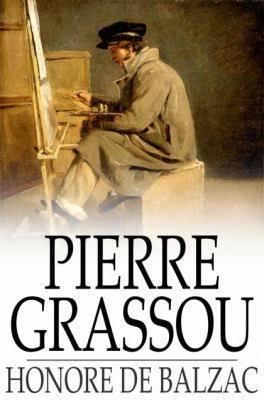6.6 /10 1 Votes6.6
Originally published 1839 Preceded by Sarrasine | 3.3/5 Goodreads | |||||||||||||||||||||||||||||||||
 | ||||||||||||||||||||||||||||||||||
Similar Honoré de Balzac books, La Comédie humaine books, Classical Studies books | ||||||||||||||||||||||||||||||||||
Pierre Grassou is an 1839 novel by French author Honoré de Balzac (1799-1850) and included in the Scènes de la vie parisienne section of his novel sequence La Comédie humaine.
Plot
Pierre Grassou de Fougères is a mediocre painter who lives off painting forgeries commissioned by an old swindler and art-dealer named Elias Magus. Grassou paints forgeries of works by Titian, Raphael, and other famous artists. Magus resells these forgeries for a large profit to members of the Petite bourgeoisie who are incapable of appreciating good art.
Monsieur Vervelle, a prosperous bottle-dealer obsessed with art, is introduced to Grassou by Magus, who introduces the painter as a grand master. Vervelle and his wife are enchanted with Grassou and believe he would make a good match for their daughter Virginie.
Grassou is invited to Ville-d'Avray, where the Vervelle mansion is garishly decorated, and also includes a large collection of Grassou’s work, including the forgery of a Titian. Grassou recognizes his own mediocrity, but when it is discovered by the Vervelles that the forgeries in their home were painted by Grassou, “far from denting his reputation, multiples Grassou’s value as an artist” and as a son-in-law, since Vervelle believes Grassou to possess all the combined talent of Rubens, Rembrandt, Terburg, and Titian.
Despite his advantageous marriage, Grassou remains bitter that he is not a true artist. “This painter, a good father and a good husband, is unable to eradicate from his heart a fatal thought, namely, that artists laugh at his work; that his name is a term of contempt in the studios; and that the feuilletons take no notice of his pictures. But he still works on; he aims for the Academy, where, undoubtedly, he will enter."
